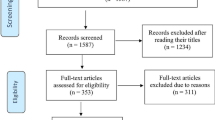Abstract
Background/objective
Childhood epilepsy is one of the disease groups with the highest disease burden in society. This study aimed to guide researchers for new studies by determining the most compelling studies and current issues through a bibliometric analysis of scientific outputs about childhood epilepsy between 1980 and 2018.
Methods
The literature review was conducted using the Web of Science (WoS) database. Epilepsy and status epilepticus were used as search keywords in WoS, and the search was performed only in the title section of the publications. Only publications in the research field of pediatrics were included in the study and were analyzed bibliometrically. Linear regression analysis was used to estimate the number of publications in the coming years.
Results
It was seen that the number of articles on pediatric epilepsy has been increasing with a linear trend. A total of 3424 publications were found. Of these publications, 2197 (64.2%) articles were analyzed bibliometrically. The top two most productive countries were the USA(654) and Italy (199). The first two most active institutions were The Hospital for Sick Children (40, 1.8%) and Tel Aviv University (38, 1.7%). The top three journals that published the most were Journal of Child Neurology (422, 19.2%), Pediatric Neurology (335, 15.2%), and Developmental Medicine and Child Neurology (201, 9.1%).
Conclusion
In this bibliometric study on childhood epilepsies, a data summary of 2197 articles published between 1980 and 2018 is presented. We hope that this article will be a useful literature review and guide researchers working on pediatric epilepsy.








Similar content being viewed by others
Data availability
Not applicable.
References
Bancaud J, Henriksen O, Rubio-Donnadieu F, Seino M, Dreifuss F, Penry J (1981) Commission on classification and terminology of the international league against epilepsy. Proposal for revised clinical and electroencephalographic classification of epileptic seizures. Epilepsia 22:489–501
Berg AT, Berkovic SF, Brodie MJ, Buchhalter J, Cross JH, van Emde BW, Engel J, French J, Glauser TA, Mathern GW (2010) Revised terminology and concepts for organization of seizures and epilepsies: report of the ILAE commission on classification and terminology, 2005–2009. Epilepsia 51:676–685
Camfield P, Camfield C (2015) Incidence, prevalence and aetiology of seizures and epilepsy in children. Epileptic Disorders 17:117–123
Davies S, Heyman I, Goodman R (2003) A population survey of mental health problems in children with epilepsy. Dev Med Child Neurol 45:292–295
Demir E, Comba A (2019) The evolution of celiac disease publications: a holistic approach with bibliometric analysis. Irish J Med Sci (1971-):1–10
Doğan G, İpek H (2019) The development of necrotizing enterocolitis publications: a holistic evolution of global literature with bibliometric analysis. Eur J Pediatr Surg
Doğan G, Kayır S (2019) Global scientific outputs of brain death publications and evaluation according to the religions of countries. J Relig Health:1–17
Dunn DW, Austin JK, Harezlak J (2003) ADHD and epilepsy in childhood. Dev Med Child Neurol 45:50–54
Engel J Jr (2001) A proposed diagnostic scheme for people with epileptic seizures and with epilepsy: report of the ILAE task force on classification and terminology. Epilepsia 42:796–803
Epilepsies PfRCo, Syndromes E (1989) Commission on classification and terminology of the international league against epilepsy. Epilepsia 30:389–399
Gan J, Cai Q, Galer P, Ma D, Chen X, Huang J, Bao S, Luo R (2019) Mapping the knowledge structure and trends of epilepsy genetics over the past decade: A co-word analysis based on medical subject headings terms. Medicine:98
GunnMap (2020) GunnMap 2,. :http://lert.co.nz/map/
Jóźwiak S, Kotulska K, Domańska-Pakieła D, Łojszczyk B, Syczewska M, Chmielewski D, Dunin-Wąsowicz D, Kmieć T, Szymkiewicz-Dangel J, Kornacka M (2011) Antiepileptic treatment before the onset of seizures reduces epilepsy severity and risk of mental retardation in infants with tuberous sclerosis complex. Eur J Paediatr Neurol 15:424–431
Maytal J, Shinnar S, Moshé SL, Alvarez LA (1989) Low morbidity and mortality of status epilepticus in children. Pediatrics 83:323–331
Ngugi AK, Kariuki S, Bottomley C, Kleinschmidt I, Sander J, Newton C (2011) Incidence of epilepsy: a systematic review and meta-analysis. Neurology 77:1005–1012
Ozsoy Z, Demir E (2018) The evolution of bariatric surgery publications and global productivity: a bibliometric analysis. Obes Surg 28:1117–1129
Park KM, Kim SE, Lee BI, Kim HC, Yoon DY, Song HK, Bae JS (2017) Top 100 cited articles on epilepsy and status epilepticus: a bibliometric analysis. J Clin Neurosci 42:12–18
Reilly C, Atkinson P, Das KB, Chin RF, Aylett SE, Burch V, Gillberg C, Scott RC, Neville BG (2014) Neurobehavioral comorbidities in children with active epilepsy: a population-based study. Pediatrics 133:e1586–e1593
Russ SA, Larson K, Halfon N (2012) A national profile of childhood epilepsy and seizure disorder. Pediatrics 129:256–264
Van Eck N, Waltman L (2010) Software survey: VOSviewer, a computer program for bibliometric mapping. Scientometrics 84:523–538
Wang M, Li W, Tao Y, Zhao L (2019) Emerging trends and knowledge structure of epilepsy during pregnancy research for 2000–2018: a bibliometric analysis. PeerJ 7:e7115
Author information
Authors and Affiliations
Contributions
Both authors contributed equally.
Corresponding author
Ethics declarations
Conflict of interest
The authors declare that there is no conflict of interest.
Code availability
Not applicable.
Additional information
Publisher’s note
Springer Nature remains neutral with regard to jurisdictional claims in published maps and institutional affiliations.
Rights and permissions
About this article
Cite this article
Kutluk, M.G., Danis, A. Bibliometric analysis of publications on pediatric epilepsy between 1980 and 2018. Childs Nerv Syst 37, 617–626 (2021). https://doi.org/10.1007/s00381-020-04897-9
Received:
Accepted:
Published:
Issue Date:
DOI: https://doi.org/10.1007/s00381-020-04897-9




